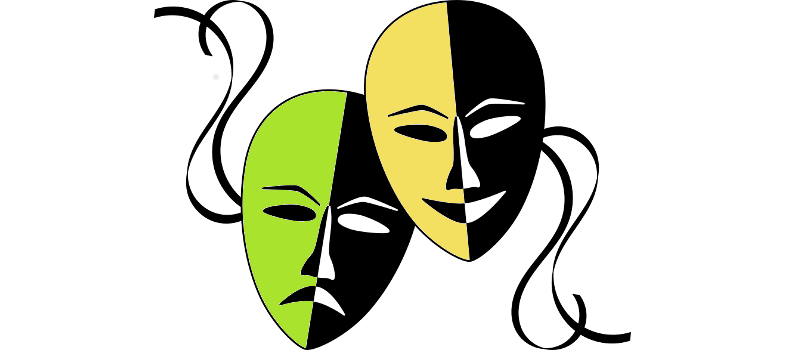Converting a topic into a play
The idea is to be made interesting, spectacular, musical, thoughtful, presentable, and effective.
Converting a topic into a play
Remember the properties of a play
Play is different from a book or a picture or a cinema. To do a play is to use space and time live in an artistic way to experience a subject with the help of actions, visuals, music, and a story. We have to remember this fact about the play at every little step we take towards the making of a play.
Write a short story or a write-up or do a scribble about the idea
Though we have the idea in our mind putting it in words helps a lot. I prefer to have a short story about one or two pages. I like to sketch the images which cross my mind while thinking. Sketching may not be possible for everyone. But one can start doing it at any age and improve with the time. It's a pleasure and helps in designing sets, costumes, and for better understanding of the concept.
Here is an example of such write -up in Marathi:
It was for landscape, a story which we did not take finally for a play.
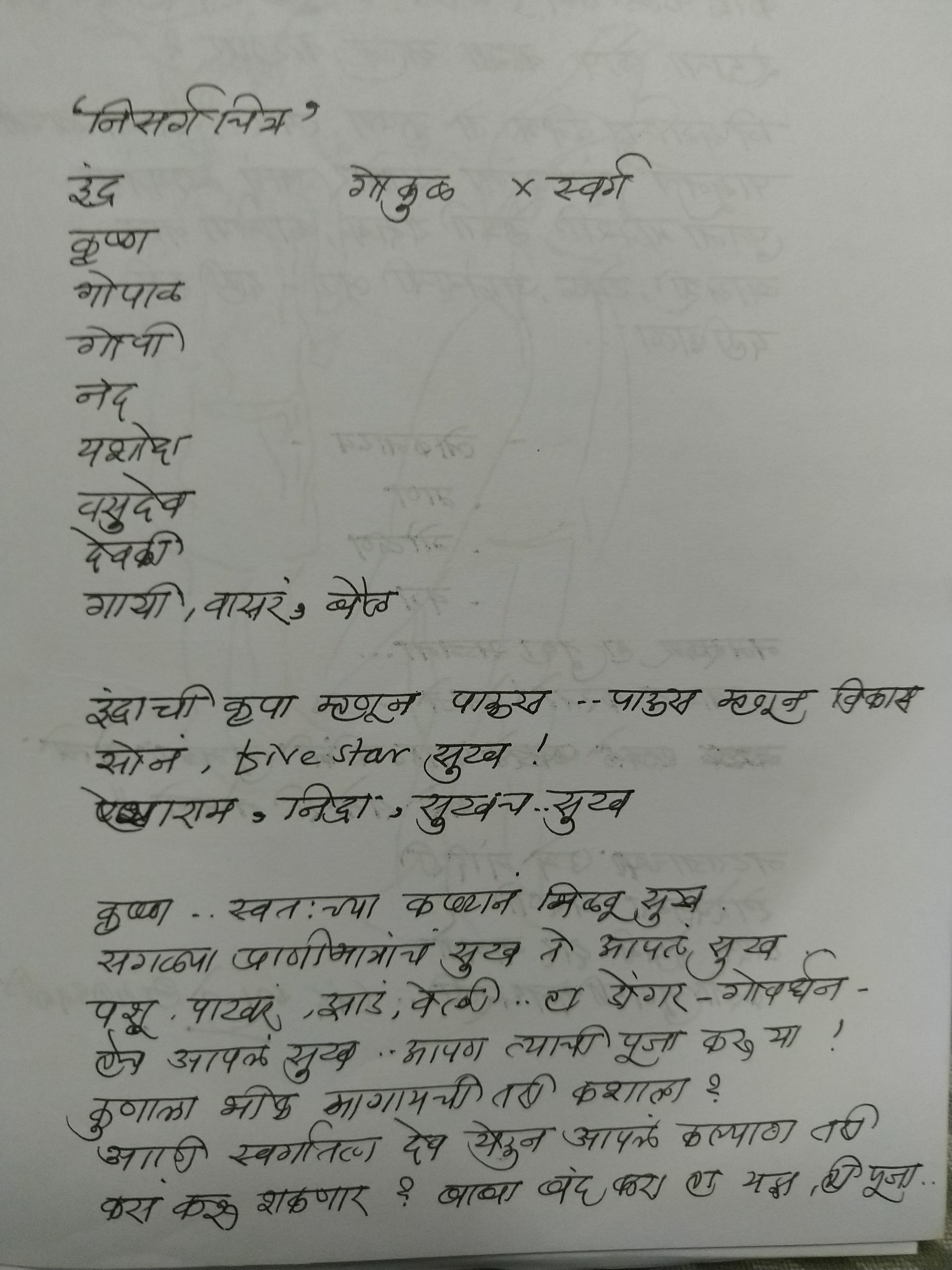
This write-up or a sketch will be the reference to use in the process of rehearsals. There is every possibility that the play may take a different shape as we proceed, but the story will tell us about how everything began.
The story will include events and emotions and make us aware of the purpose of the play. It will provide us the direction to proceed further.
At the beginning of `a landscape,' I did many sketches to design a bird as a character in the play. I wrote about what they must be thinking when they look at the changing landscapes.
the story or content on which we did a play.
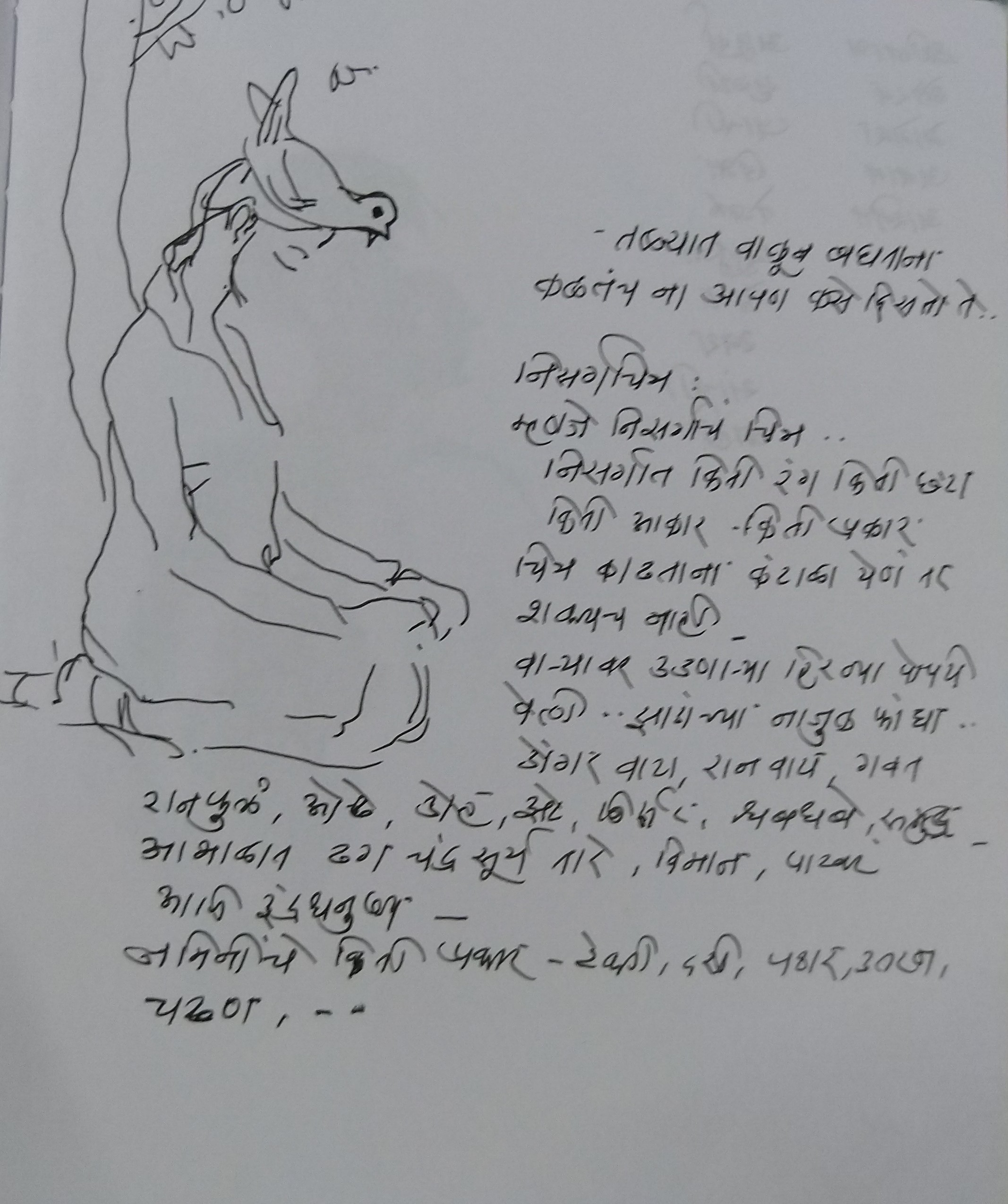
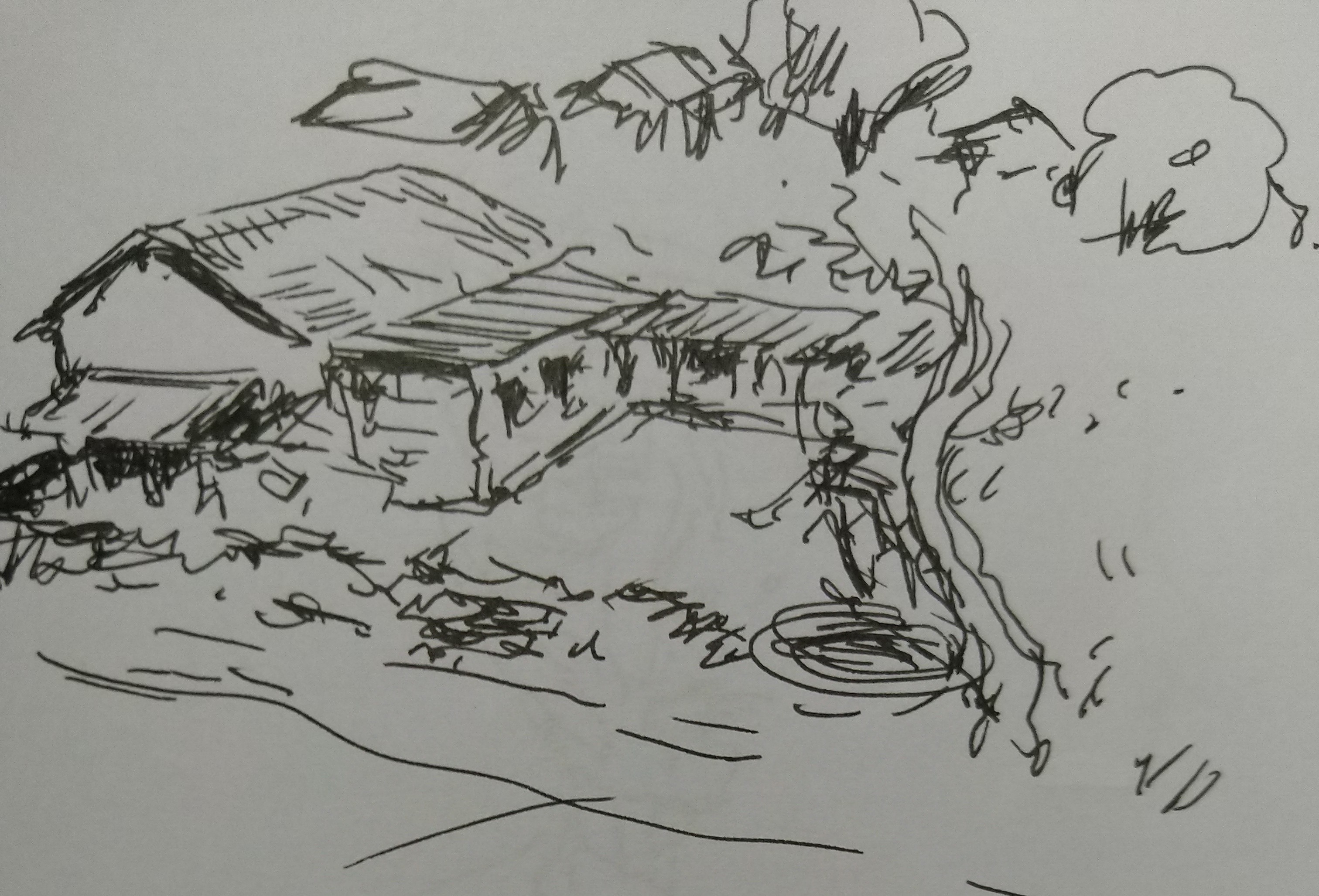
The sketch above is a memory of our old house.
My grandmother used to sing a song to call sparrows and would ask them to accept grains from her. Personal memories do come on the surface whenever we are on a creative venture.
Let the children think and speak aloud
Give them 15 to 20 minutes to think over an idea and let them talk about it aloud in front of everybody. Some may not speak well but will be trying to gather thoughts from others who speak well. Getting every little point from everyone will help.
The contribution of children is important. It gives them a sense of creation. They remain attached to the playmaking firmly. They too are eager to know the next steps. By daily discussions and thinking about the script they get trained unknowingly.
We can do this many times by breaking the topic in other small issues every day before the rehearsals and get clues to move ahead.
They too start visualizing some scenes. Sometimes may suggest movements.
Think about the total theatre
The visualization will begin in mind once the idea is selected. Everything we know about the topic gets into motion and start making images in our mind. These images will be quite short ones, and they need their timely documentation.
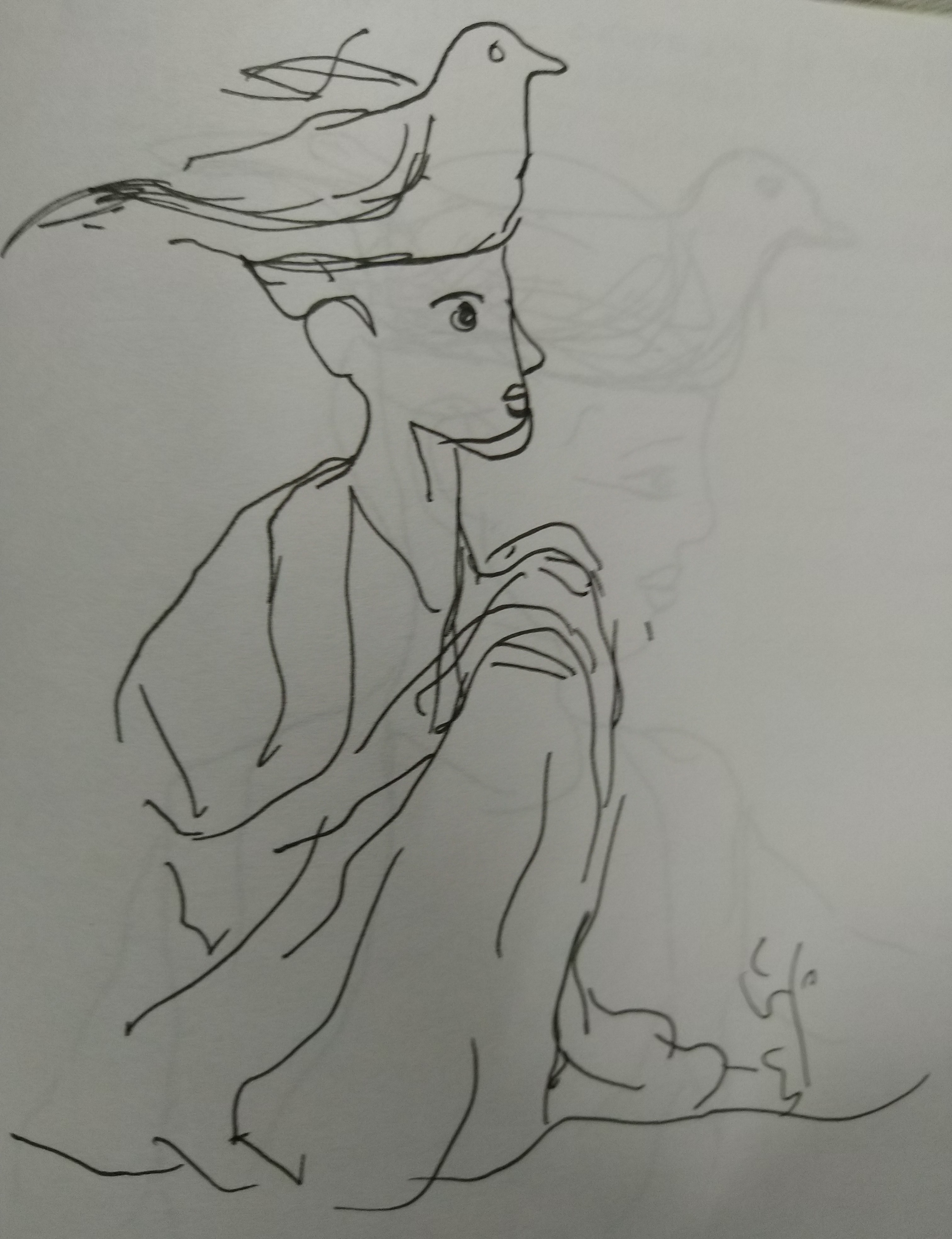
As we go on collecting the data of images and events, we need to arrange them in proper order, and depending on their importance, we keep them or discard them.
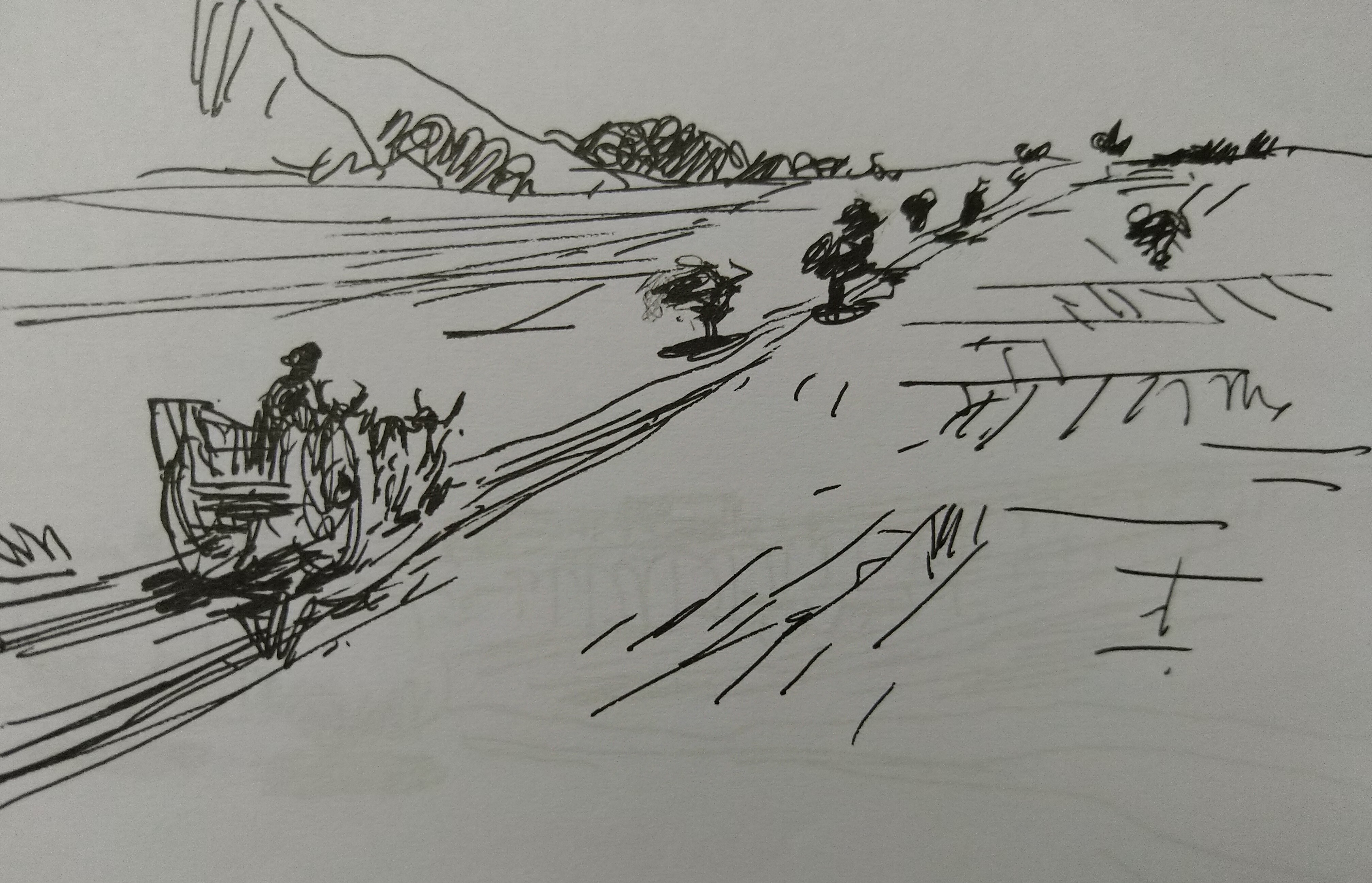
These images give us an idea about the set design some day. That may change the other day, but the thought process about the set continues subconsciously. Same is right about the costumes, music, makeup, etc.
The random thoughts appear and go. We have to be alert and receptive and prompt enough to document every detail. It's like writing a diary regularly.
To state one play, you may need to write data about twenty times of its script.
Improvise and document the scenes
After initial warmup games and discussions, we start experimenting with scenes. We do the same scenes with different children to decide about the possible casting in the play.
The scenes we never write before and children do it after a short discussion. They decide some dialogues, some movements, and even the set and property and present it.
Someone documents the performance. Then we discuss the performance in detail and see if it was helpful for the proposed play. We discuss the movements, the compositions, the casting, their use of the stage, and the cumulative effect they created. This goes on, and the dialogues too get improvised in every rehearsal. The important dialogues keep their place in the script, and the unnecessary ones disappear silently in the next rehearsals.
Rehearsals and rehearsals
for
the perfection
Once we get into the rehearsals we try to reach the goal of continuous nonstop performance. This is not an easy task. It requires many people to work together regularly.
In rehearsals, we go on thinking about the course of the play. We do rethink and start everything again sometimes. If we have any doubt about the content, we investigate it and conclude. This is essential as moving ahead with the wrong information will keep the fault in the script. It may seem minute, but it gets magnified in the performance. The audience gets diverted. The link breaks. So perfection is the keyword in every department of the play
